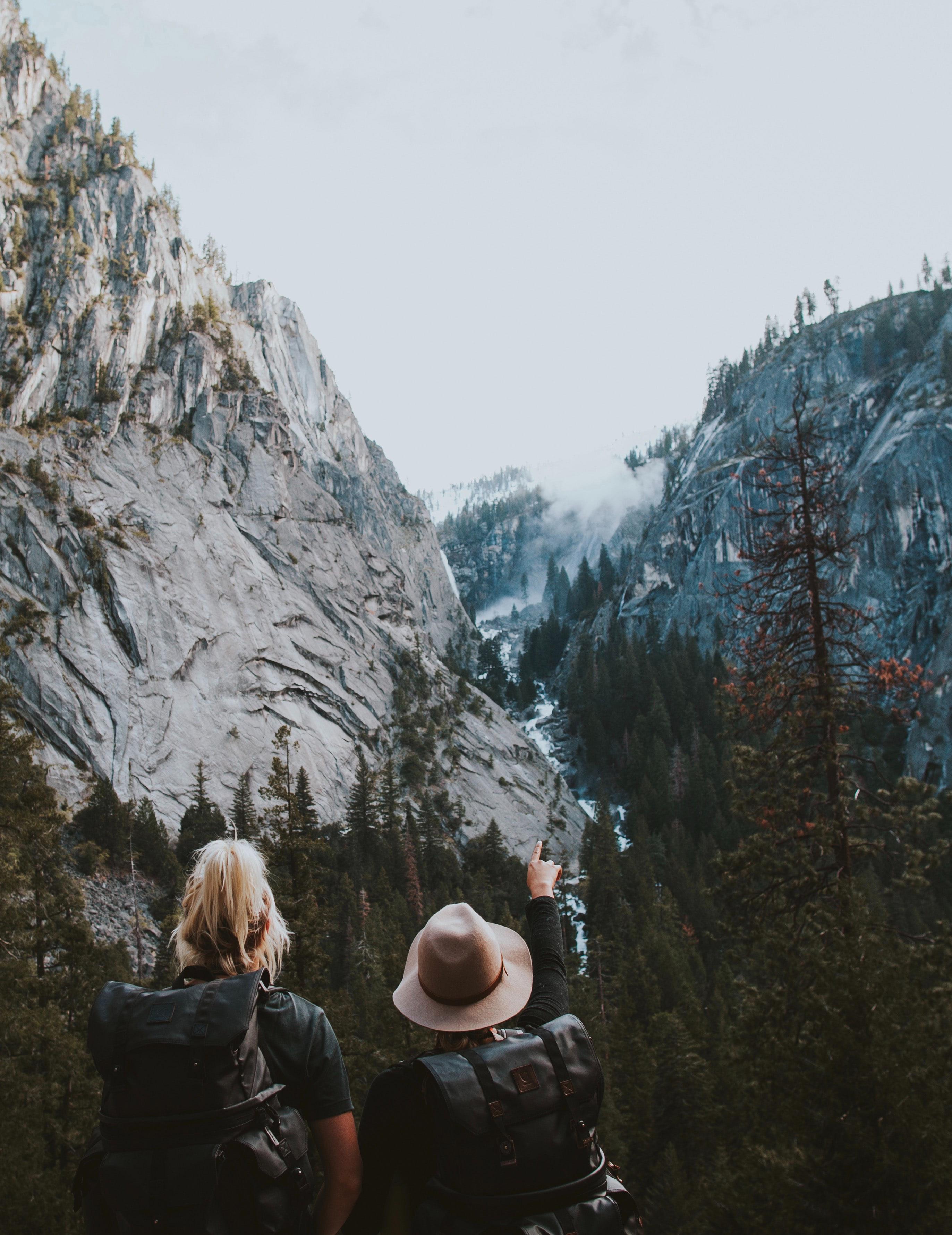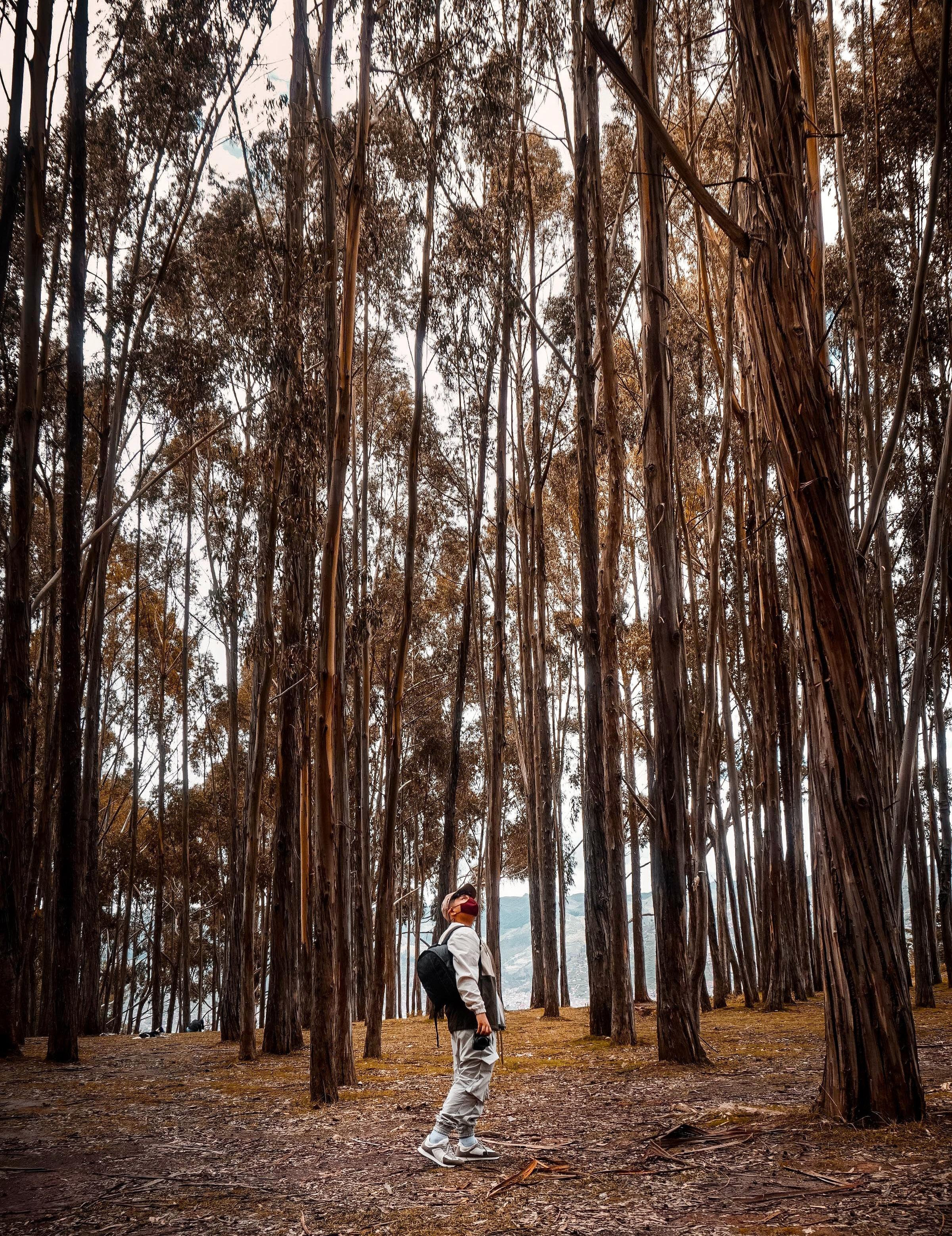
7 minute read
Outdoor Immersion and Our Health
by kavya katragadda | design by nicole huang
the outdoors as an escape
Advertisement
I hardly remember the summer that was swept away by COVID-19, other than it being marked by such monotony that each day blended into the next. With limited indoor activity options and in-person social interactions, the pandemic of COVID-19 became a pandemic of boredom, and my subsequent restlessness eventually drove me to escape to the outdoors.
Bike rides and long hikes became my choice retreats — sometimes I’d bike 30 miles or drive to a pretty oceanside hiking trail two hours away just to pass the mornings and afternoons. I don’t think I’ve spent so much time outdoors since I was younger, when I would play tag in our neighborhood cul-de-sac through breezy summer evenings, stare at the starry skies while away at camp, run during track practices on spring afternoons, and bike ride with family on Saturday mornings.

It’s easy to forget the outdoors in the bustle of modern life, but the pandemic has brought out a renewed enthusiasm for the outdoors in many. More people have been going hiking, running, and biking. In fact, bicycle sales have spiked so much that suppliers are experiencing extreme shortages that may take months to resolve. This shift is dramatic, particularly because pre-pandemic society was increasingly relying on indoor entertainment activities such as TV, social media, e-sports, and online gaming.
While not all negative, this turn to the indoors has been accompanied by a neglect of the outdoors. We are often immersed in man-made environments, such as offices, cities, malls — away from plants, and forests, and trees, and nature. Loss of outdoor time may lead to “nature-deficit disorder” — a medley of psychiatric disorders, obesity, and other afflictions.
The rekindling of our relationship with the outdoors has been a positive side effect of the otherwise negative COVID-19 pandemic.
health benefits of outdoor immersion
Spending time outdoors has been scientifically shown to be very beneficial and even necessary for physical and mental health. Outdoor immersion contributes to strong cognitive functioning, stress and anxiety reduction, immune system function, and speedier healing.
Japanese researchers who have studied forest bathing — a more evocative name for walks in the forest — hypothesized that forest aerosols might be associated with elevated natural killer cell counts, which help fight infections and tumors in the immune system. Particularly in this pandemic period, a possible immune system boost from spending time outside is particularly desirable.
In addition to physical health benefits, there are many cognitive health benefits correlated with outdoor immersion. However, not all time spent outside elicits equal benefits. A natural environment is potentially crucial. University of Michigan psychology researchers sent some adult subjects for a walk through a park and sent others through a busy city walk, finding that cognitive skills — including memory and attention span — were restored in adults who walked through the park but not in those who walked through the busy city. This difference could potentially be attributed to the fact that, in natural environments, people pay attention more broadly and effortlessly compared to in bustling cities where they are forced to pay effortful attention. The less-intensive attentiveness promoted by nature’s tranquility contributes to greater mind and bodily relaxation.
Additionally, according to a 2015 study published by the Proceedings of the National Academy of Sciences, 90-minute nature walks were correlated with reduced activity in humans’ prefrontal brain cortex—a part of the brain that contributes to continuous rumination over negative thoughts and emotions when people are stressed. So, not only can walking in forests improve memory and attention, but it can also contribute to relaxation and the perpetuation of fewer negative thoughts. In this way, an outdoor park walk can be a perfect reset from study or work, particularly for those who may spend much of their time working indoors (on “Zoom University” or otherwise).

For those who are unable to escape to unadulterated nature, away from urban bustle, not all hope is lost: listening to the sounds of nature—even while indoors—can be a great alternative.
An online 2017 study published by Scientific Reports used an MRI scanner to measure brain activity in people who listened to sounds from both natural and busy environments. The researchers found that the group that listened to natural sounds experienced an “outwarddirected” focus of attention—what people experience during wakeful rest periods. The group that listened to nonnatural sounds, on the other hand, experienced “inwarddirected” focus—what people experience during stressful periods of anxiety and depression. This difference, in the types of focus people experienced, could be due to the fact that hearing nature sounds and outdoor silence can lower the levels of the stress hormone cortisol.
The growing plethora of research regarding the beneficial effects of outdoor immersion has supported the emergence of ecotherapy, which prescribes “nature” during healthcare delivery. One such organization, Park RX America, has 10,000 parks on its shelf of nature prescriptions. Doctors who participate in the program write prescriptions for patients to visit a nearby park regularly to help mitigate the burden of chronic disease and promote health, happiness, and environmental stewardship.
getting outside!
Malia, a co-staff member of the UCLA Backpacking Club, shared with me how the pandemic and closure of the UCLA campus changed her activity levels and the time she spent outdoors. “Because you don’t go to class in-person, you no longer walk five miles every day, and you spend most of the time inside, attending virtual classes,” she explained. “Sometimes I really have to remind myself to go outside and take a break.”
Though Malia said she was very active before the pandemic, she had to find new strategies to get outside. She now views going outside as all the more important because of the stagnancy created by the pandemic.
Malia says she motivated herself to spend time outdoors by participating in the November Project’s Miles Challenge, which groups people in virtual teams of eight to ten. Each team seeks to accrue the most mileage through team members’ walking, running, and biking as much as possible in order to gain more points, and aligning outside immersion with the motivation of virtual socialization and competition.
Setting a specific, attainable daily goal was another way Malia motivated herself to get outside. Malia’s daily goal is going on a little walk. “I know I can achieve this goal,” she said. “It’s a one-mile out-and-back walk that I do every day. Even if I start off stressed, by the time I get to the end point and turn around, I feel more calm and a lot more ready to focus.” She added: “When you’re completely surrounded by nature, it’s easier to be completely focused in the moment, and more in touch with what’s in front of you rather than in your head. Her number one tip for getting outside is simple: a short daily walk. “Walks are underrated, walks can do amazing things for you, and I didn’t really realize that until COVID, so maybe something good came out of this.”

Though I’ve been going on fewer lengthy hikes and bike rides now that my classes have started up again, I have found ways to continue spending time outdoors. This is especially important for me because I’ve realized that when I don’t take at least half an hour to run or walk around outside, I feel particularly drained, especially after hours of staring at my laptop. I do sometimes fall prey to the trap of indoor dormancy set by laziness, but I never regret it when I push myself to venture outside.
While getting outside can be daunting, and can sometimes seem too effort-intensive, the benefits are worth it. And according to current research, it only takes about 120 minutes a week—just 17 minutes a day—to get an effective dose of outdoor immersion to promote health and wellbeing. Grabbing a pair of walking shoes and stepping out your front door for a quick stroll is all it takes.
References
1. “Bicycle Sales Boom during Coronavirus Pandemic: ‘They’re Buying Bikes like Toilet Paper’.” chicagotribune.com. (2020).
2. “More Time Out in Nature Is an Unexpected Benefit of the COVID-19 Sheltering Rules.” scientificamerican.com. (2020).
3. “Ecopsychology: How Immersion in Nature Benefits Your Health.” e360. yale.edu. (2020).
4. “Going Outside-Even in the Cold-Improves Memory, Attention.” news. umich.edu. (2008).
5. “Nature Experience Reduces Rumination and Subgenual Prefrontal Cortex Activation.” Proceedings of the National Academy of Sciences. (2015).
6. “Sour Mood Getting You Down? Get Back to Nature.” health.harvard.edu. (2018).
7. “U.S. Geological Survey.” usgs.gov. (2020). 8. “November Project.” november-project.com. (2020).










